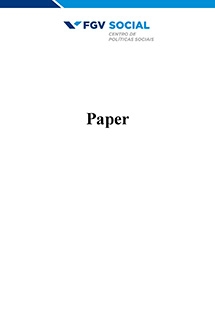
A new incidence analysis of Brazilian social policies using multiple data sources - Neri, Marcelo Cortes
Sobre o paper:
Brazil is a country where the poorest 50% earn around 10% of its aggregate labor income while the wealthiest 10% earn approximately 50% of total labor earnings3 . The high degree of labor income inequality has kept a substantial part of the population below the poverty line, despite the relatively high per capita earnings observed. Consequently, the small share of total GDP appropriated by labor is as worrisome as the degree of labor earnings inequality found in Brazil. While most countries—with this data available—show that the share of total GDP appropriated by labor corresponds to 2 /3 of total GDP, in Brazil, this value is around 40%. Almost every study on Brazilian income distribution uses information solely on income, and in particular, on monthly labor earnings, so that the remaining 60% of income not appropriated by labor is neglected, contributing to our ignorance about the degree of Brazilian inequality. The main task of this paper is to assess inequalities in terms of access to different social policies in the 1996-2002 period. This means using a larger variety of welfare sources. A related issue is to incorporate the effects of the provision of public goods and the so-called social services, either public or private, in the assessment of the welfare level of the income poor population.




